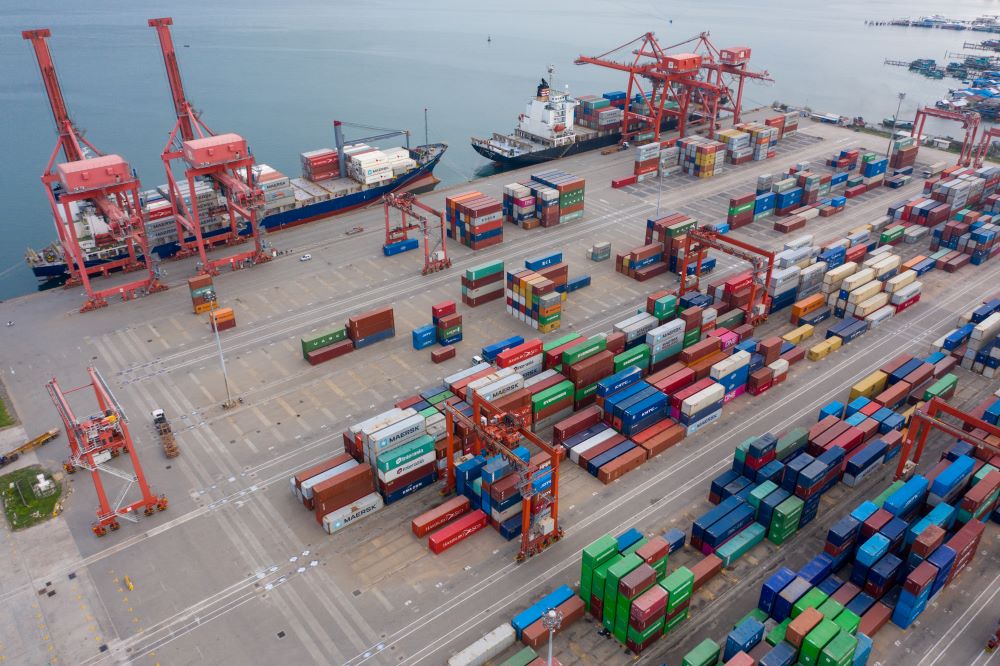
It will take UK ports five years to bounce back to pre-pandemic levels in terms of the volume of cargo they handle, after it emerged that they are set for their worst year since 1983.
Goods volume was down 13.5% on 2019 to 408 million tonnes as ports struggled with structural change, Brexit and meeting new investment requirements towards decarbonisation.
Long-term change
Research by Drewry Maritime Advisors, commissioned by the UK Major Ports Group, noted that the pandemic and decarbonisation will be long-term drivers of change.
Tim Morris, chief executive of the UK Major Ports Group, said: “There’s no doubt it’s been a challenging period for some freight cargoes. The shocks of the pandemic have compounded long term structural change. But it’s testament to the resilience of ports that they’ve not only kept 95% of UK trade flowing but also kept investing for the long term.”
Oil decline
The decline in oil production was also a key factor in fallen volumes, according to the FT.
The amount of oil handled by British ports has been in decline since 2005, but the pandemic saw oil demand fall steeply due to the reduced amount of travel.
Felixstowe troubles
The new research comes as customers face rising uncertainty over the reliability of British ports such as Felixstowe.
The UK’s largest container port has had the most vessel dockings or ‘calls’ of ships from Asia cancelled of any European port in the past six months.
Almost one third of Felixstowe’s calls were omitted as carriers looked to avoid congestion at Britain’s biggest container port.
Easing bottlenecks
However, according to DFDS there has been a recent easing of bottlenecks around UK ports, reports Business Live.
In its monthly volume report, the company said total volumes were 5.4% down on the same month in 2020, though UK routes were in growth from 2019 levels. The past year has seen a 7.9% uptake in total volumes.
DFDS said: “The negative impact from supply chain bottlenecks, that reduced volumes in Q3 and October, eased during November.”
More disruption for 2022
Disruption to global supply chains will continue into 2022, Drewry has also warned, identifying four potential new disruptions:
- Ongoing labour disputes on the US West Coast
- China’s zero tolerance Covid policy affecting logistics
- Flash points between the carrier industry and the forwarder/non-vessel operating (NVO) sector
- Difficulties dealing with minimum quantity commitments
Looking ahead, Drewy noted how an increasingly unreliable and expensive shipping industry calls into question the previous assumptions behind low-cost production in Asia serving distant markets at minimal logistics costs.
Air freight
Companies have turned to air cargo to get round ocean freight disruption but the cost of flying cargo has nearly doubled on key routes between China, the US and Europe over the past three months, reports the FT.
With consumer travel depressed, the industry’s capacity is 13% down on 2019 according to Marco Bloemen, a cargo advisory lead at Seabury Consulting (an arm of Accenture).
The shortfall comes as demand has risen 6%, leading to a nearly 20 percentage point gap between supply and demand, Bloemen said.
HGV boost
Meanwhile, the Department for Education has received more than 2,000 applications for HGV driver training in the first few days of its Skills Bootcamp scheme, which aims to train 11,000 drivers, reports Loadstar.
It is hoped that newly qualified drivers could be on the road by March.


